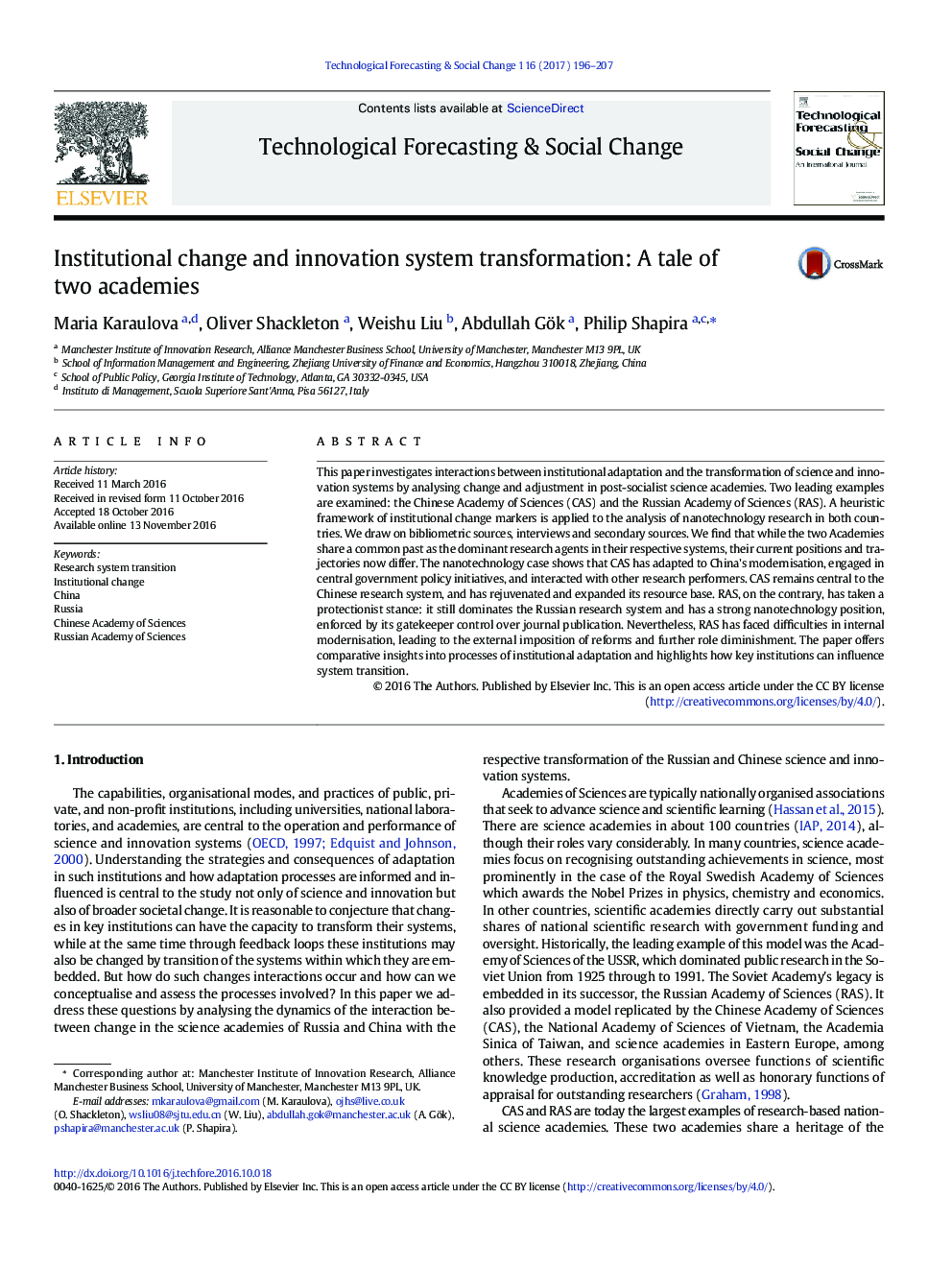| Article ID | Journal | Published Year | Pages | File Type |
|---|---|---|---|---|
| 5037009 | Technological Forecasting and Social Change | 2017 | 12 Pages |
â¢Recent institutional change is analysed in the Russian and Chinese Academies of Science.â¢The analysis framework probes four key markers: Outputs, Re-creation, Centrality, and Competence & Autonomy.â¢Evidence is drawn from bibliometric, documentary and interview sources, with a comparative nanotechnology case focus.â¢The Russian Academy of Sciences sought to maintain its former structures yet lost privilege, resources and independence.â¢The Chinese Academy of Sciences underwent an institutional re-interpretation, reinforcing its centrality and importance.
This paper investigates interactions between institutional adaptation and the transformation of science and innovation systems by analysing change and adjustment in post-socialist science academies. Two leading examples are examined: the Chinese Academy of Sciences (CAS) and the Russian Academy of Sciences (RAS). A heuristic framework of institutional change markers is applied to the analysis of nanotechnology research in both countries. We draw on bibliometric sources, interviews and secondary sources. We find that while the two Academies share a common past as the dominant research agents in their respective systems, their current positions and trajectories now differ. The nanotechnology case shows that CAS has adapted to China's modernisation, engaged in central government policy initiatives, and interacted with other research performers. CAS remains central to the Chinese research system, and has rejuvenated and expanded its resource base. RAS, on the contrary, has taken a protectionist stance: it still dominates the Russian research system and has a strong nanotechnology position, enforced by its gatekeeper control over journal publication. Nevertheless, RAS has faced difficulties in internal modernisation, leading to the external imposition of reforms and further role diminishment. The paper offers comparative insights into processes of institutional adaptation and highlights how key institutions can influence system transition.
